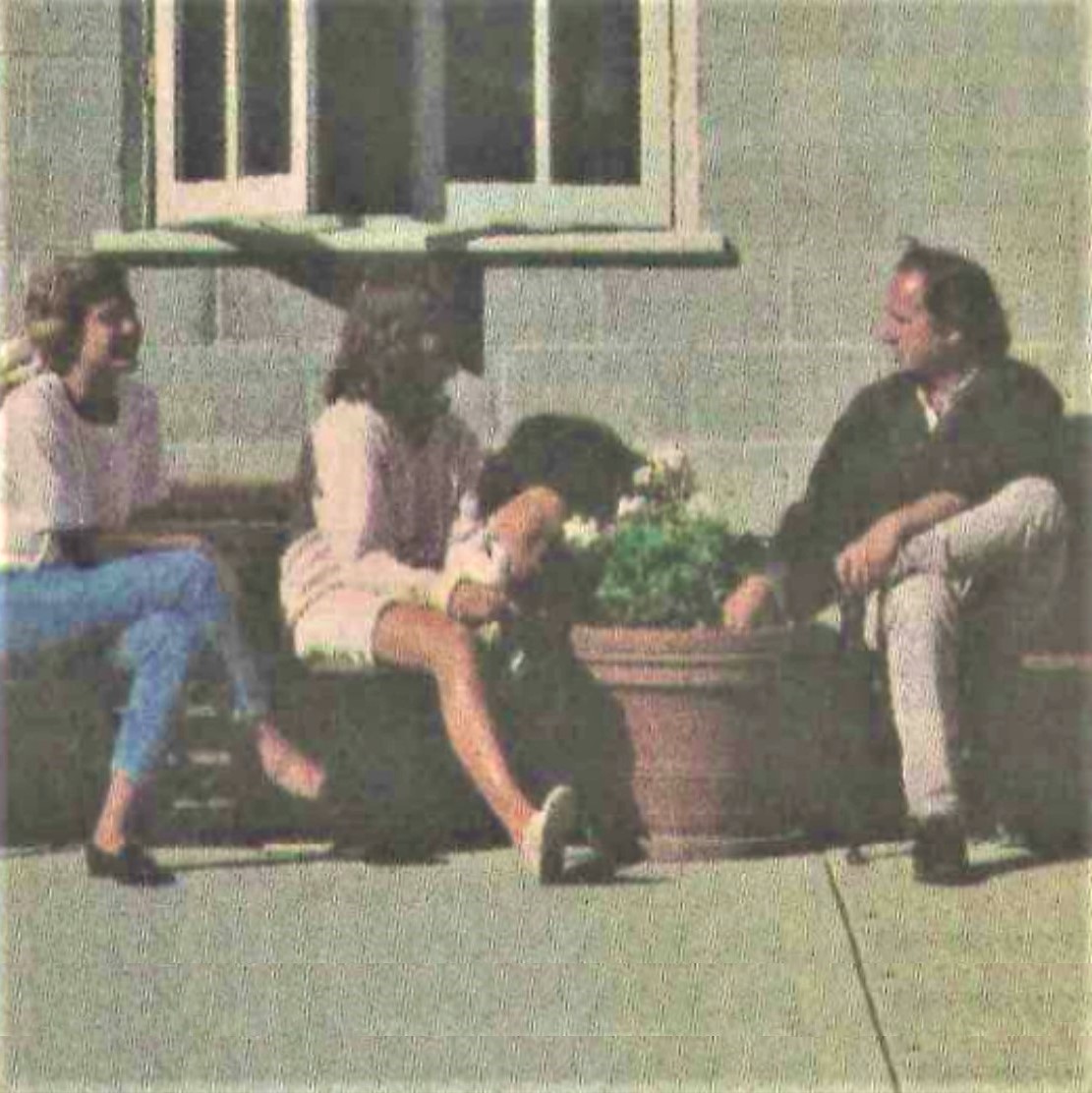
University Gives Out Real-Life Assignments
Santa Clara University Students Kristy Stivers and Julie Franklin, both 18, talk with Julian Street Inn guests
For a group of 130 Santa Clara University students, San Jose’s East Side has been a laboratory where they had a chance to see in real life what they learned on campus during the school year.
The students, who are part of the university’s Eastside Project (now the Ignatian Center’s Arrupe Engagement), work at shelters for the homeless, at schools and at senior or day-care centers. Their assignments, which are part of their curriculum, include teaching English to non-English-speaking immigrants, caring for children of homeless families and helping seniors cope with such chores as shopping or a doctor’s appointment.
The Eastside Project aims to act as a bridge between the university and the community, bringing upper and middle-class students from private institution to experience at a personal level who poor people are, how poverty affects them and what agencies do for them.
“I have become more conscious of how bureaucratic the system is,” said Michael Treon, 20, an English major at Santa Clara who volunteers at the Julian Street Inn, a shelter for the homeless on Julian Street. “I can’t see how people say that (the homeless) choose to live like this. These are people who are lost in the shuffle.”
This is the kind of insight that the project’s directors want to instill in the students. After the students become professionals, the directors hope they will keep the less fortunate sector of their community in mind when they make business decisions.
“The hope is that they become more aware (of the fact) that, when they make decisions, they have an impact on people,” said the Rev. Dan Germann, one of the project leaders.
The project was conceived in 1985 by the Revs. Gerdenio Manuel and Steve Privett as a way to integrate the university with the community.
In planning the project, the university invited social workers and community leaders from East San Jose to discuss how the project could be better implemented. The project was formally launched in fall of 1986.
Since the, hundreds of students have worked in key community issues in the East Side such as the amnesty program for undocumented workers. Between September 1987 and June 1988, they helped people who hardly spoke English prepare the documents that they needed to apply for amnesty as the Immigration Counseling Center of Catholic Charities. About 6,000 undocumented immigrants filled out their forms at that center.
“Without (the students), we wouldn’t have been able to assist as many people as we did,” said the center’s director, Marcia Pacelli.
The project also assigns students to day-care centers such as the Family Living Center, which houses about 40 homeless families. The students care for children while their parents attend educational meetings or go out on job interviews.
The project has earned the respect of many people in East San Jose who see it as an asset for both the students and for the people they work with.
“They are a godsend for us,” said Trudy McCulloch, an associate principal at Mount Pleasant High School, where several project workers teach English as a second language.
McCulloch said high school students are happy with the one-to-one attention, even if it is for one period a week. And the mere presence of college students on campus encourages the Mount Pleasant students to continue on to higher education she said.
“They feel that there us a world of college they can aspire to,” McCulloch said.
She added that the group of about 16 Santa Clara University students who work at the high school came there to help the students cope with the shooting death of freshman Larry Brown, who was killed on campus several weeks ago.
Other community workers are happy to see local universities paying more attention to their neighborhoods.
“I welcome the help of college students in the community,” said David Aikman, director of the Si Se Puede, another organization that employs students from San Jose State University to help elementary school children stay away from gangs.
“It’s good teaching college students the notions of community service,” Aikman said. “It’s good to teach them the responsibility of giving back to their community.”
Because of their work with the project, after graduation some students have returned to the area as professionals.
“Working with the elderly gave me experience that helped me get a job as a social worker,” said Brooke Russo, a 23-year-old psychology graduate who worked in the project four years.
Russo, who grew up in Willow Glen, said she learned about foreign cultures caring for Asian seniors at the John XXIII Senior Center downtown. She now works at the Winchester Living Center, a nursing home where seniors receive care 24 hours a day.
“I learned that they have gone through a lot to get here,” Russo said. “I have a tremendous amount of respect for them.”
By Francisco Garcia
Mercury News Staff Writer
San Jose Mercury News
May 30, 1990